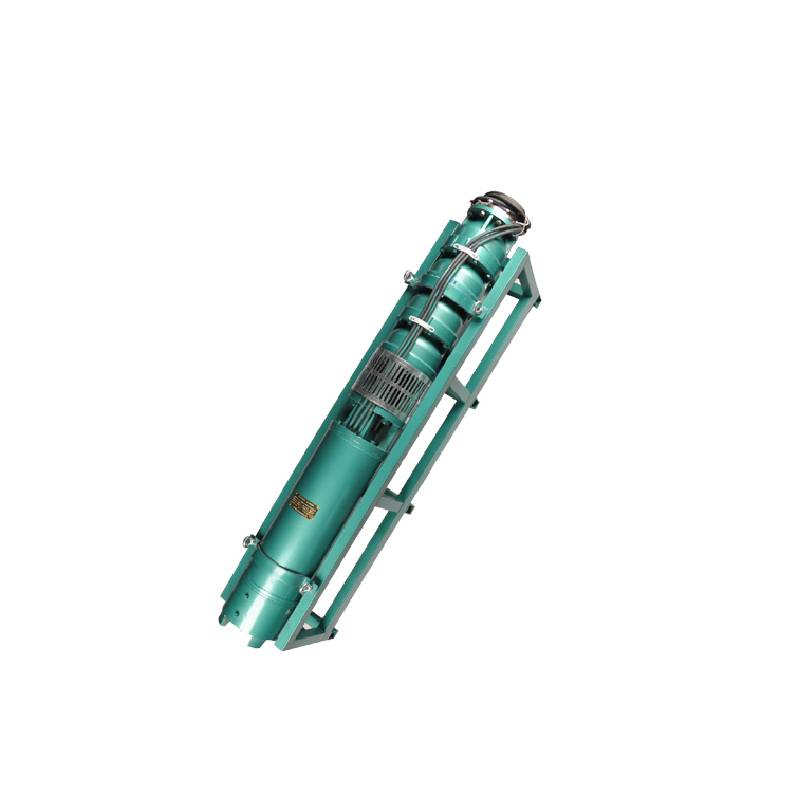Nov . 23, 2024 19:54 Back to list
electric submersible pump
Understanding Electric Submersible Pumps A Comprehensive Overview
Electric submersible pumps (ESPs) are pivotal components in various industries, particularly in oil and gas extraction, water management, and wastewater treatment. These devices operate by converting electrical energy into mechanical energy, which is used to pump fluids from a lower level to a higher level. This article delves into the significant features, applications, benefits, and operational principles of electric submersible pumps.
What is an Electric Submersible Pump?
An electric submersible pump is a type of vertical pump that is designed to operate while submerged in the fluid it is meant to pump. The core components of an ESP typically include a multi-stage centrifugal pump, an electric motor, a protector, and a discharge head. The pump consists of several impellers, which help to build up pressure as the fluid is drawn in from the inlet and pushed out through the discharge pipe.
Working Principle
The working principle of an electric submersible pump is relatively straightforward. The ESP is lowered into a well or tank containing the fluid, whether it be water, oil, or a slurry. When electrical power is supplied to the motor, it drives the impellers within the pump. The rotation of the impellers accelerates the fluid, causing it to move upwards through the stages of the pump. The design allows the ESP to function efficiently even in deep well scenarios, with some units capable of lifting fluids from depths of over 8,000 feet.
Applications
Electric submersible pumps find application across various sectors
1. Oil and Gas Industry ESPs are widely used in oil extraction processes. They enhance the production of crude oil from wells where natural pressure is insufficient, thus improving recovery rates.
2. Water Supply In municipal water supply systems and agricultural irrigation, ESPs are utilized to pump groundwater efficiently.
4. Geothermal Energy In geothermal wells, ESPs help circulate water and transfer heat efficiently.
5. Mining Operations They are employed in dewatering processes within mining operations to maintain safe working conditions by removing excess water.
electric submersible pump

Advantages of Electric Submersible Pumps
Electric submersible pumps come with a range of advantages
- High Efficiency ESPs provide a highly efficient means of lifting fluids from deep sources, outperforming traditional surface pumps in many scenarios.
- Versatile Design They can be custom-designed for specific applications, accommodating various fluid types and well depths.
- Reduced Surface Equipment As ESPs are submerged, they minimize the need for extensive surface equipment, allowing for less clutter and easier operation in many environments.
- Lower Operational Costs Compared to other pumping methods, ESPs often yield lower energy consumption and maintenance costs, given their efficiency and reliability.
- Integrated Systems Many ESPs feature integrated monitoring systems that ensure their performance can be tracked in real time, providing operators with critical data for maintenance and troubleshooting.
Disadvantages and Considerations
While ESPs offer numerous benefits, there are also challenges to consider. They can be complex to install, requiring careful planning and knowledge of the specific application. Additionally, their performance can be impacted by factors such as fluid viscosity, temperature, and the presence of solids within the fluid.
Proper maintenance is crucial; without regular inspection, ESPs may suffer from issues like seal failure or motor burnouts, resulting in costly repairs and downtime. Operators must ensure they have robust preventive measures and monitoring systems in place to avoid these problems.
Conclusion
Electric submersible pumps are essential for fluid handling in various industrial applications. Their efficiency, versatility, and ability to perform in shallow and deep wells make them a popular choice for operators in the oil and gas, water management, and mining industries. Understanding the operational principles, advantages, and challenges associated with ESPs can help in selecting the right pump for specific needs, thereby optimizing performance and ensuring reliable service in fluid transfer operations. As technology continues to advance, the future of electric submersible pumps looks promising, with ongoing innovations aimed at improving efficiency and ease of use.
-
Submersible Water Pump: The Efficient 'Power Pioneer' of the Underwater World
NewsJul.01,2025
-
Submersible Pond Pump: The Hidden Guardian of Water Landscape Ecology
NewsJul.01,2025
-
Stainless Well Pump: A Reliable and Durable Pumping Main Force
NewsJul.01,2025
-
Stainless Steel Submersible Pump: An Efficient and Versatile Tool for Underwater Operations
NewsJul.01,2025
-
Deep Well Submersible Pump: An Efficient 'Sucker' of Groundwater Sources
NewsJul.01,2025
-
Deep Water Well Pump: An Efficient 'Sucker' of Groundwater Sources
NewsJul.01,2025
-
 Submersible Water Pump: The Efficient 'Power Pioneer' of the Underwater WorldIn the field of hydraulic equipment, the Submersible Water Pump has become the core equipment for underwater operations and water resource transportation due to its unique design and excellent performance.Detail
Submersible Water Pump: The Efficient 'Power Pioneer' of the Underwater WorldIn the field of hydraulic equipment, the Submersible Water Pump has become the core equipment for underwater operations and water resource transportation due to its unique design and excellent performance.Detail -
 Submersible Pond Pump: The Hidden Guardian of Water Landscape EcologyIn courtyard landscapes, ecological ponds, and even small-scale water conservancy projects, there is a silent yet indispensable equipment - the Submersible Pond Pump.Detail
Submersible Pond Pump: The Hidden Guardian of Water Landscape EcologyIn courtyard landscapes, ecological ponds, and even small-scale water conservancy projects, there is a silent yet indispensable equipment - the Submersible Pond Pump.Detail -
 Stainless Well Pump: A Reliable and Durable Pumping Main ForceIn the field of water resource transportation, Stainless Well Pump has become the core equipment for various pumping scenarios with its excellent performance and reliable quality.Detail
Stainless Well Pump: A Reliable and Durable Pumping Main ForceIn the field of water resource transportation, Stainless Well Pump has become the core equipment for various pumping scenarios with its excellent performance and reliable quality.Detail
